here - Beyond Borders: An International Business Blog
advertisement
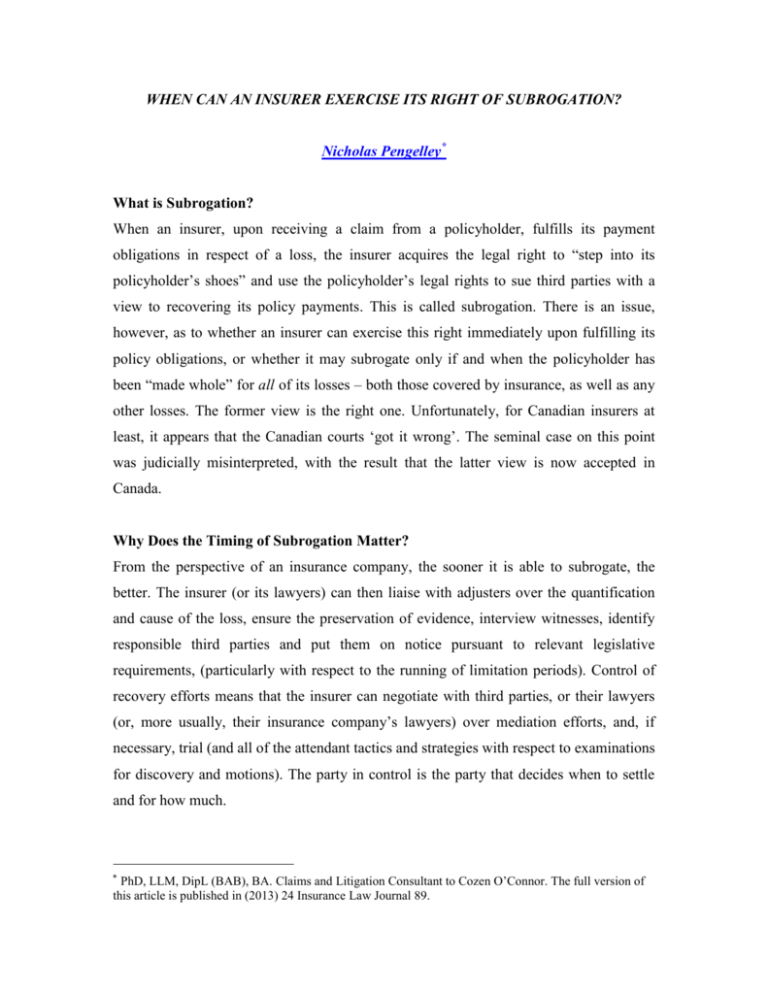
WHEN CAN AN INSURER EXERCISE ITS RIGHT OF SUBROGATION? Nicholas Pengelley* What is Subrogation? When an insurer, upon receiving a claim from a policyholder, fulfills its payment obligations in respect of a loss, the insurer acquires the legal right to “step into its policyholder’s shoes” and use the policyholder’s legal rights to sue third parties with a view to recovering its policy payments. This is called subrogation. There is an issue, however, as to whether an insurer can exercise this right immediately upon fulfilling its policy obligations, or whether it may subrogate only if and when the policyholder has been “made whole” for all of its losses – both those covered by insurance, as well as any other losses. The former view is the right one. Unfortunately, for Canadian insurers at least, it appears that the Canadian courts ‘got it wrong’. The seminal case on this point was judicially misinterpreted, with the result that the latter view is now accepted in Canada. Why Does the Timing of Subrogation Matter? From the perspective of an insurance company, the sooner it is able to subrogate, the better. The insurer (or its lawyers) can then liaise with adjusters over the quantification and cause of the loss, ensure the preservation of evidence, interview witnesses, identify responsible third parties and put them on notice pursuant to relevant legislative requirements, (particularly with respect to the running of limitation periods). Control of recovery efforts means that the insurer can negotiate with third parties, or their lawyers (or, more usually, their insurance company’s lawyers) over mediation efforts, and, if necessary, trial (and all of the attendant tactics and strategies with respect to examinations for discovery and motions). The party in control is the party that decides when to settle and for how much. * PhD, LLM, DipL (BAB), BA. Claims and Litigation Consultant to Cozen O’Connor. The full version of this article is published in (2013) 24 Insurance Law Journal 89. Canada Gets it Wrong The 1883 decision of the UK Court of Appeal in Castellain v Preston has long been accepted as the locus classicus of subrogation insurance. In that case, the Court held that an insurer’s right to subrogate arises when the insurer has fully indemnified its policyholder under the terms of the policy. The decision is not an easy read, however, and is interspersed with decisions of the lower court, with which the UK court of Appeal (mostly) disagreed. The Ontario High Court of Justice considered Castellain just three years after it was decided, in National Fire Insurance Co v McLaren. The Court stated, “there can be no such thing as subrogation to the right of a party whose claim is not wholly satisfied.” Meaning no subrogation until all losses, uninsured as well as those covered by the policy, are satisfied. The Court’s finding was based on a misunderstanding of Castellain. It also accorded significant importance to an 1837 Pennsylvania decision (that had nothing to do with insurance law). The Court also relied heavily on some American texts. Upon examination these have nothing to say on the topic. McLaren, nevertheless has been accorded the status of dogma by Canadian courts, including the Supreme Court of Canada, ever since. This misunderstanding has led to the situation, in Canada, where (unless the matter is dealt with in the policy), an insurance company is unable to assume control of a subrogation action unless and until all of the insured’s losses have been covered. So seriously is adherence to this fallacious doctrine taken, that in a recent Canadian case Zurich Insurance Co Ltd v Ison T.H. Auto Sales Inc - where the policy did include a clause giving the right of subrogation to the insurer on making payment under the policy, it was still held insufficient to give the insurer control. The Ontario court said the clause needed to include express language granting the insurer the right to prosecute an action against a third party for both insured and uninsured losses. The UK Gets It Right In fact the UK never got it wrong. It was the Canadians who misinterpreted Castellain. The House of Lords confirmed this when it considered the issue in the 1993 case of Lord Napier & Ettrick v Hunter. The Law Lords held that the insured is “made whole” when he is indemnified under the policy, at which point the insurer may exercise its right of subrogation and control recovery efforts, regardless of the continued existence of uninsured losses. They also applied a “top down” approach to the distribution of funds recovered through subrogation. These are to be applied first to any losses of the insured beyond the policy limit, then to the insurer. Last priority is accorded to the insured’s excess or self-insured retention and deductible. Australia – Terra Nullius? Courts in New South Wales and Western Australia have acknowledged the competing views on the issue and there are statements in a number of cases, including decisions of the High Court, that might be read as supporting the view endorsed by the House of Lords in Napier as to exercise of the right of subrogation arising once payment is made under the policy. No Australian court has confronted the issue squarely, however. Nor has an Australian court addressed the issue of the priority of distribution of recovered funds. Section 67 of the Insurance Contracts Act 1984 (C’th) is intended to clarify this. Ironically, this provision is so badly worded and so confusing that there are diametrically opposed views as to its effect – some saying that it accords priority to the insured, others to the insurer. In almost 30 years, no cases have considered the provision. It is now more than a quarter of a century since Australia cut its ties to England’s judicial apron strings. The days are long gone when decisions of the House of Lords were followed blindly by Australian courts. Nevertheless when this matter comes squarely before an Australian court, it is the House of Lords’ decision in Napier, that will exercise more persuasion than the Canadian cases, based as they are on a flawed understanding of Castellain and obscure American sources. With respect to distribution of recovered funds and the interpretation of s67 of the Insurance Contracts Act, the sensible approach devised in Napier has already been adopted by the Australian Government. Legislation to amend the Act, giving priority of recovery to the party that controls the action, has recently passed the Australian Parliament and will come into force at the end of 2013.

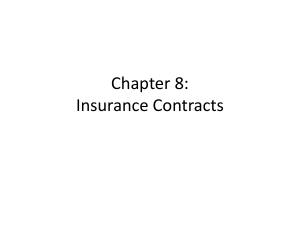




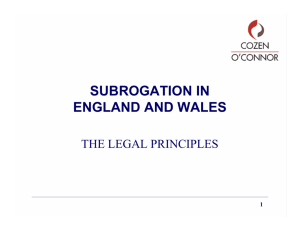
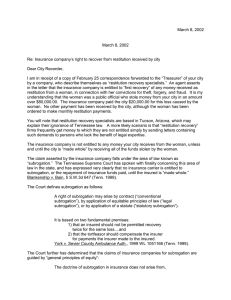

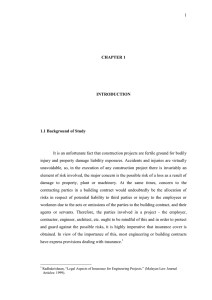
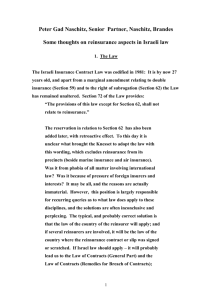
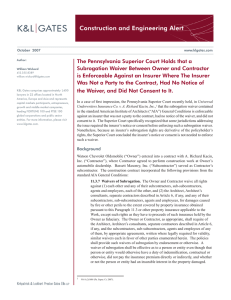
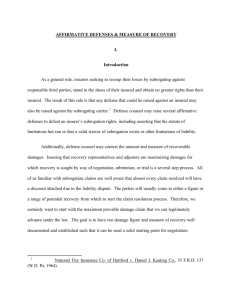
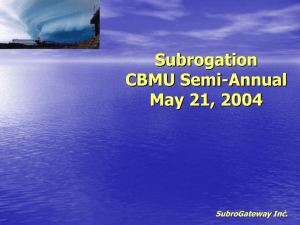
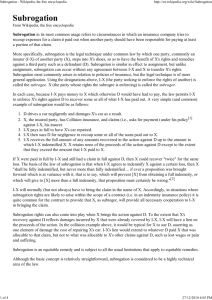
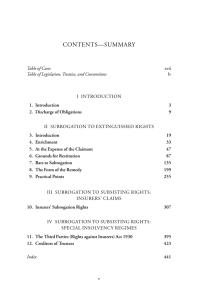
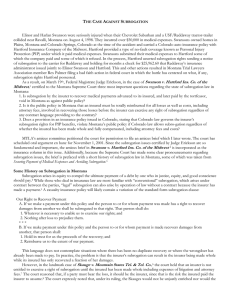
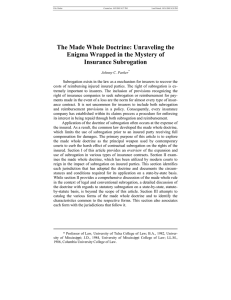
![SUPREME COURT REPORTS [2010] 2 S.C.R. M/S. DYNAMIC](http://s3.studylib.net/store/data/008219098_1-9014b76fc87e6f0ae1644d9bf70359fb-300x300.png)